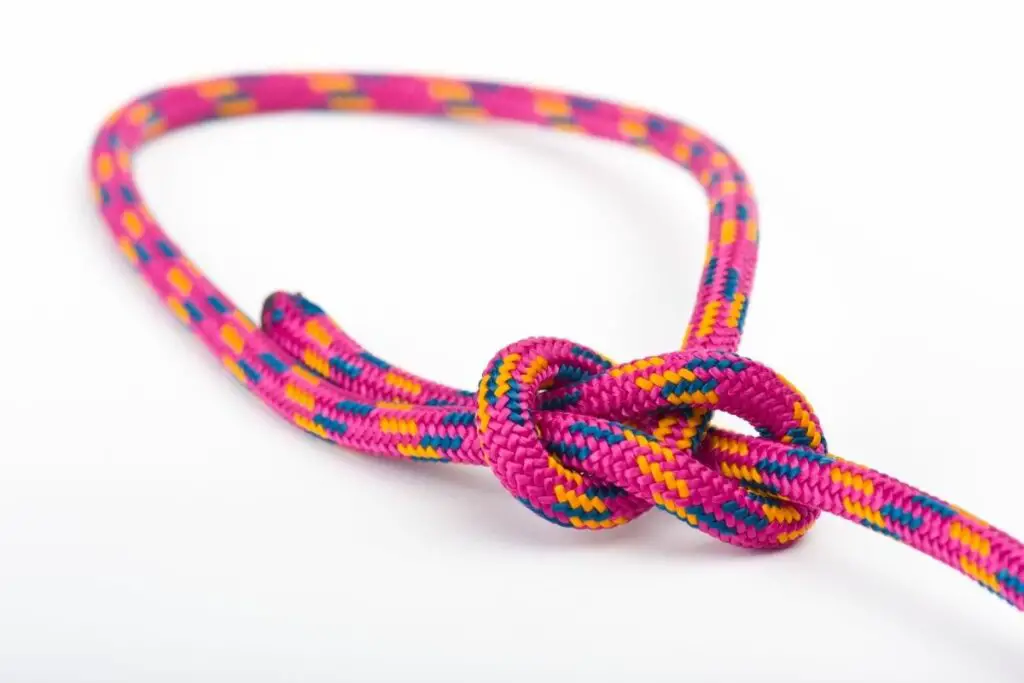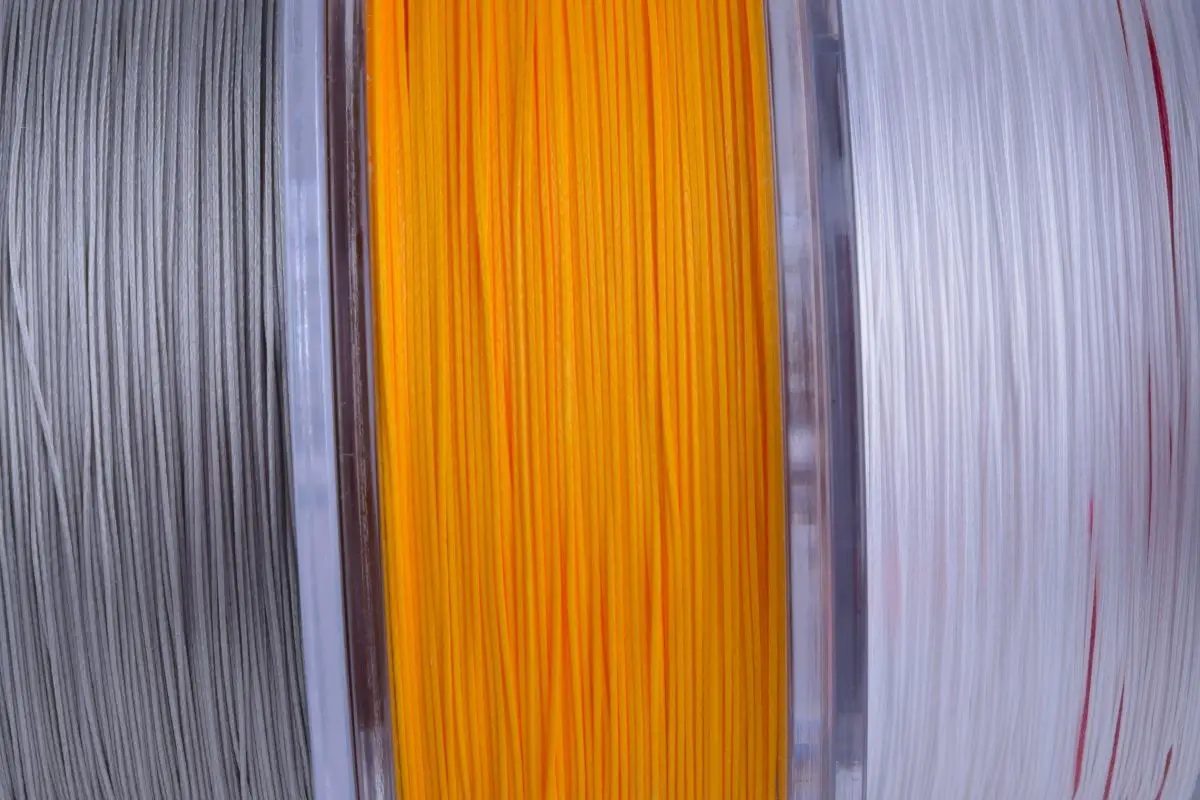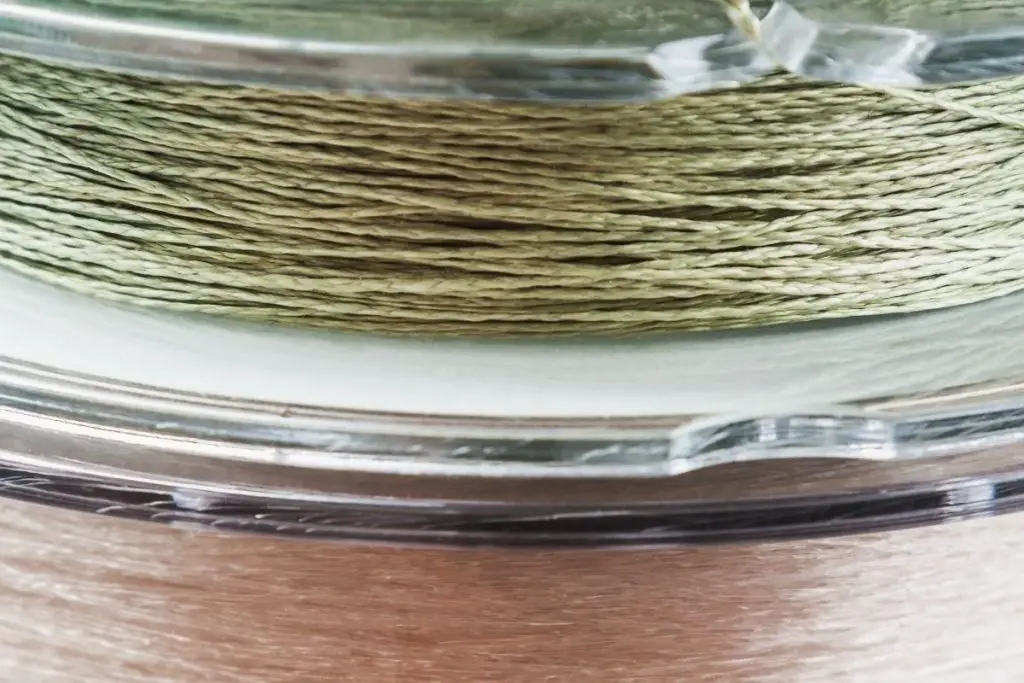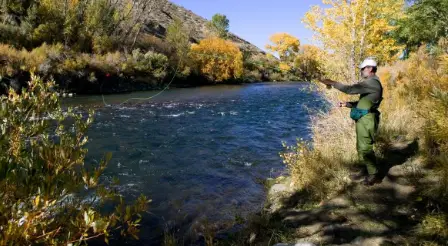Fluorocarbon leader to braid size lines are generally used for any type of fishing that goes deep into the water. You can find them on drop shots, jigs, and anything that enhances fast sinking tactics.
This is because fluorocarbon is a dense, heavy fishing line.
Braids are often thicker than fluorocarbon but not as heavy.
This is because they are made up of multiple lightweight materials to create a strong line. They are often used to catch heavier fish.
Tying the two together is a great idea if you need to add a little more power to your bottom tactic fishing or if you need a little extra weight on your braid.
But which knot should you use?
The Best Knots For Fluorocarbon Leader To Braid Size
When it comes down to it, there are only two great knots to tie a fluorocarbon leader to braid size size and braid line together. These are the Double Uni Knot and the Albright Knot.
Both have their own strengths, which we will discuss later. Whichever one you choose, know that they are both great.
If you are tying a fluorocarbon line to anything, you’ll be prioritizing strength over anything, anyway.
So opting for a more slimline knot isn’t necessary, and it doesn’t matter how light the line is afterward either. In fact, a heavier light can even be helpful.
That’s why we can aim for the strongest knots we can find.

Tyger Leader is reader-supported and may earn a commission when you book or purchase using our links. Learn more about our affiliate disclaimer here.
About The Double Uni Knot
The Double Uni Knot would be our first choice when tying fluorocarbon and braid together. This is because the knot can create a rating of 85% to 90% strength.
That means the knot won’t untie with a massive force pulling it.
The second reason is because this knot is easy to master. Many other great suggestions could have taken the Double Uni Knot’s place, but the ease of this powerful tie outweighs any other benefits.
And along with the easy method, it’s also super simple to remember.
Once you’ve done it a couple of times, you won’t need to come back to this page to remind yourself.
If you haven’t created this knot before, follow our guide below.
How To Tie A Double Uni Knot
Step 1
Place the two lines parallel to each other, pointing opposite ways. Allow the ends to overlap about 10 inches.
Step 2
Using the thinnest line first, pull the end back, loop it around and then pull it forward again to create a circle shape.
Then wrap the material around the two parallel lines and the third looped line. Create around 8 wraps.
Step 3
When the last wrap finishes, tuck it through the loop and then pull it out. The pull will force the wraps and loops together, creating the first Uni Knot.
Step 4
To complete the second Uni Knot, you need to do the same with the other end; however, this thicker line should only wrap 4 or 5 times.
Step 5
When that second Uni Knot is completed, pull the two main lines. This will pull the two Uni Knots together, creating a Double Uni Knot.
This will pull the two Uni Knots together, creating a Double uni Knot.
About The Albright Knot
The Albright Knot is a lot of angler’s favorite, especially when using a fluorocarbon to braid combination. This is because the knot is strong and a little bulky.
Being bulky means gliding isn’t really an option, but bottom fishers often don’t care about that. Instead, this simple and fast knot makes tying less fiddly.
It is also designed for lines with different thicknesses, which is precisely what we have here.
How To Tie An Albright Knot
Step 1
Using the fluorocarbon line, create a loop. Then bend the tip of that loop forward and feed the end of the braid line through.
Step 2
While still holding the loop, wrap the braid line around the fluorocarbon line into a complete circle.
Step 3
Do this 10 times, making sure to include the folded fluorocarbon lines and the threaded braid line.
When you finish the last wrap, tuck the remaining braid line back through the loop. Do this in the same direction that it entered.
Step 4
Gently pull the loop to tighten the first element of this knot. You should notice the waps sliding towards the loop end.
They should be squeezing the loop shut. Make sure that no wraps fall off the loop. The braided line should also be dangling tightly next to its original line.
Step 5
With the remaining short braid line, wrap it around the long braid line like a Uni Knot. Twist it 3 or 4 times, and poke the end of the line through the braid loop.
Give it a pull, and you’ve created a stopper for the Albright Knot.
Why Tie Fluorocarbon To Braid?

Tying the two lines together can give you some great advantages to your finishing.
On the braid side, you’ll notice that working with the bait will be a lot easier. This is because the braid doesn’t stretch, so you can maneuver the bait without unnecessary effort.
Secondly, the hook-set will be consistent due to this lack of stretchiness. With a stronger hook set, your landing percentage should increase.
And the braided nature means you can feel the details of the rod, giving you more control over the reel.
But the benefits aren’t just from the braided side; the fluorocarbon adds some advantages too.
Because fluorocarbon is thick, it is also stiff. This means you shouldn’t get any foul casts, especially when the windy weather comes.
Secondly, fluorocarbon is invisible underwater, which can trick the fish into biting.
Knowing these different benefits should help you figure out which part of the tied line should be hitting the water and which should be helping you aim. Really it depends on the type of fishing you like to do.
Summary
If you can complete the Double Uni Knot, then attempting the Albright Knot shouldn’t be too difficult. The hardest part of the Albright Knot is the Uni finish, which is why we suggest learning the Double Uni Knot first.



